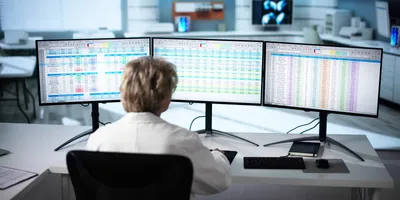Asset management is defined by tech marketplace G2 as “a systematic process to cost-effectively procure, maintain, upgrade, and dispose of organizational assets. As a result, it enhances asset delivery potential and lowers costs.”
Assets can include both tangible and intangible elements of an organization. In this series, the focus is on laboratory instrumentation and equipment. Successfully managing all the different types of equipment in your lab is essential to ensure the lab and its people operate at their highest potential and exceed goals. But implementing and maintaining an asset management plan also requires continuous effort, time, and brain power.
Why is asset management important?
Asset management in a modern lab goes beyond scheduling routine maintenance or budgeting for new purchases. It’s about taking advantage of what you can learn from your lab equipment—how different instruments can best be best used, how to streamline workflows, and how to ensure you get the maximum return on investments. This diverse knowledge improves a lab manager’s decision making, which ultimately leads to greater success for the business.
Buying lab equipment
Purchasing new lab instruments is a common and necessary part of the asset management process. As science and technology continue to evolve at such a rapid pace, it is crucial that a modern lab provides enhanced flexibility, efficiency, and productivity. To build this type of working environment, new instrument purchases should include features like remote monitoring, cloud-based software, and automation. Such features enable scientists to adapt to shifting research focuses, stay updated on the progress of projects even when they aren’t physically in the lab, and make it easier to share data and results with other team members. During the search for new lab equipment, keep these factors in mind, and consider both the short- and potential long-term needs of the instrument to ensure you get the most out of your investment.
It’s also important to determine what the maintenance requirements will be like for a new piece of equipment over its lifetime, and how any planned or unexpected downtime will impact the lab’s operations. This will help you determine what sort of service contracts or warranties you will want to secure with the new purchase.
Lab management software
Just like equipment manufacturers are offering enhanced features to better accommodate the modern lab, laboratory software providers are also elevating their product capabilities. With a variety of lab management software options to choose from, it is important to select a software package that will best suit your lab’s needs. Management software can also be customized to better accommodate your lab’s operations. When exploring the options, there are a few key things to consider: “All good lab management programs take into account the three main pillars of methodology: people, technology, and process,” explains Heather Lorenz, senior product manager with Agilent’s CrossLab Group. “Factors such as optimizing how software is used (people), understanding the scope of that software use (process), and determining how the lab assets and supplies will be identified and tracked (technology), should all be considered in regards to the dynamic needs of the lab.”
These considerations are just a few pieces of a more robust asset management strategy. Continue reading through this series to get in-depth insight into the procurement, maintenance, and management of your lab’s assets.


